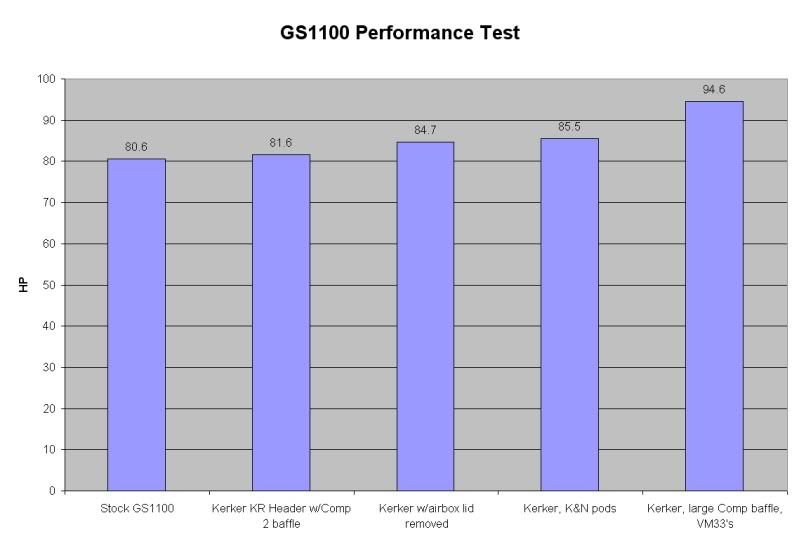That thread referenced series of dyno test showing that a GS1100 with a header and airbox mods showed a modest HP increase over stock at best (2.1 hp), and a power loss at worst. The complaint many of you guys had with that test was that the intake side tuning was not optimized to go along with the header.
Found another old magazine performance test today, in the January 1983 Cycle World, titled In Search of the Free Lunch. This test took a GS1100 and ran a series of dyno pulls after progressively adding a Kerker KR header, removing the stock airbox lid, removing the stock airbox and installing K&N pod filters, and lastly adding VM33 carbs. All dyno tests included CO checking and rejetting so the carb mixture could be verified and optimized.
The bike used for this test was obviously tired but it does show representative gains by adding the equipment noted. They ran another GS1100 at the end of the test and it made 12 hp more than the test mule in the stock configuration so the baseline was verified as low.
Iíll scan this article for you guys tomorrow so you can read it for yourselves, but one of the most interesting things to me is that the results obtained by removing the airbox lid are only 1 hp short of pods. The author also said that the required carb rejetting was only minor with the airbox lid off but with the pods, extensive rejetting (not just changing the mains) was required before the bike would pull properly on the dyno.
Bottom line is that the header and pods was good for 4.9 hp or 6.8%, but the VM33ís are the big winner.


.png)
 . Post if you don't mind.
. Post if you don't mind.

 Ray.
Ray.
.png)
 ) and carbs jetted dead on. Bike was loud as hell at all speeds, cantankerous as hell at all but full throttle, but absolutely ran like a "rapedape" when wide open.
) and carbs jetted dead on. Bike was loud as hell at all speeds, cantankerous as hell at all but full throttle, but absolutely ran like a "rapedape" when wide open. for more acceleration/less top speed), the bike felt about the same at wide open throttle as before. Albeit with lower top speed.
for more acceleration/less top speed), the bike felt about the same at wide open throttle as before. Albeit with lower top speed.
Comment